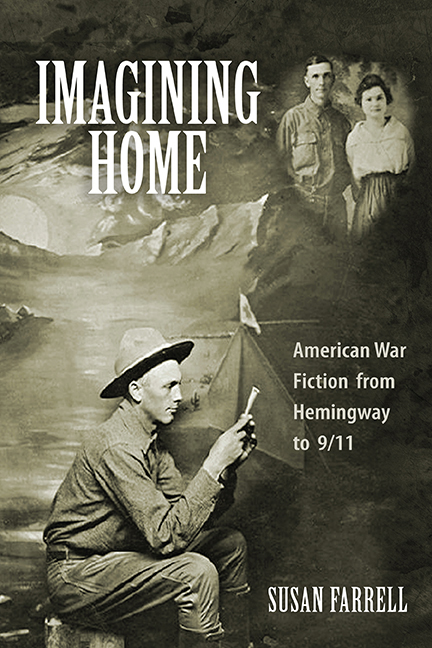Book contents
- Frontmatter
- Contents
- Acknowledgments
- Introduction
- 1 “Isn't It Pretty to Think So?”: Ernest Hemingway's Impossible Homes
- 2 A “Nation of Two”: Constructing Worlds through Narrative in the Work of Kurt Vonnegut
- 3 “It Wasn't a War Story. It Was a Love Story”: Tim O'Brien and the Ethics of Home
- 4 “A Hole in the Middle of Me”: Shattered Homes in Post-9/11 Literature
- Afterword
- Notes
- Works Cited
- Index
2 - A “Nation of Two”: Constructing Worlds through Narrative in the Work of Kurt Vonnegut
Published online by Cambridge University Press: 25 August 2018
- Frontmatter
- Contents
- Acknowledgments
- Introduction
- 1 “Isn't It Pretty to Think So?”: Ernest Hemingway's Impossible Homes
- 2 A “Nation of Two”: Constructing Worlds through Narrative in the Work of Kurt Vonnegut
- 3 “It Wasn't a War Story. It Was a Love Story”: Tim O'Brien and the Ethics of Home
- 4 “A Hole in the Middle of Me”: Shattered Homes in Post-9/11 Literature
- Afterword
- Notes
- Works Cited
- Index
Summary
Part I: Introduction
JUST AS HEMINGWAY became the icon of an era—representing a search for authenticity and meaning for a generation “lost” following the First World War—Kurt Vonnegut can be seen as a representative of his times. A writer whose playful, humorous, and often fantastical stories first generated a cult following on college campuses in the mid-1960s, Vonnegut developed into one of the most popular and easily recognized post– Second World War American writers with the publication of his masterpiece, Slaughterhouse-Five, in 1969. Because his work, with its reliance on a deceptively simple, nearly childlike style that includes a conversational tone and short, easy-to-read chapters, was accessible to a wide audience, it is easy to overlook how his antirealistic novels meshed with the most pressing literary, philosophical, and social concerns of the late twentieth century and helped usher in the postmodern period in American literature. Not only do his works, with their humorous drawings, cartoonish characters, and tales of flying saucers and space aliens, blur the line separating high and low culture, much like Andy Warhol's soup cans, but Vonnegut was in the forefront of postmodern writers who adopted metafictional techniques in order to explore the relationship between art and reality. In his novels, Vonnegut frequently includes opening and closing chapters that comment on his own writing, he draws attention to the artifice of his stories as he tells them, and he even appears as a character in his own work who interacts with his fictional creations. Like much postmodern literature, Vonnegut's works depict a reality that is linguistically determined— the stories we tell about reality shape the reality we experience. Vonnegut's experimental, nonconventional writing style suggests that if we want to change reality, we must first change the way we tell stories about reality.
But, perhaps most importantly, Vonnegut's fiction offers a scathing critique of social injustice, war, and environmental degradation, all the while managing to express compassion for the weak, “listless,” bewildered, and lonely human beings who experience the suffering and atrocity of the Second World War and postwar life.
- Type
- Chapter
- Information
- Imagining HomeAmerican War Fiction from Hemingway to 9/11, pp. 61 - 103Publisher: Boydell & BrewerPrint publication year: 2017



